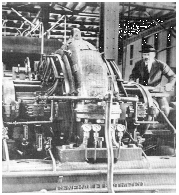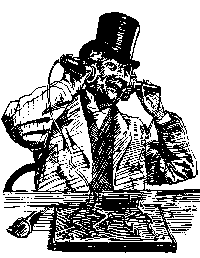1900-1909 - Early Experiments

1906
The 'Alexanderson Alternator' is delivered to Fessendon's station.On Christmas Eve, 1906 he broadcasts speech and music to surprised shipboard operators. He broadcasts on 42 Kilohertz at 1 kilowatt. The programming includes a female voice singing a Christmas carol, a violin solo by Fessenden, and an invitation to report on reception.
 Alexanderson with one of his alternators
Alexanderson with one of his alternators
Max Wien uses cooled gaps and quenched gaps in his spark transmitters.
1906
Henry H.C. Dunwoody patents the use of carborundum in detectors.Lee DeForest patents the "Audion" as a "new receiver for wireless telegraphy." He added a 'Grid' to the Fleming Valve, creating the 'Triode'.
 DeForest
DeForest
1907
G.W. Pickard perfects the crystal detector and takes out a patent for the use of silicon in detectors..The first 'Broadcasts' of records are done to aid in testing, so the operator didn't have to talk.
The worlds first Trans-Atlantic commercial wireless service is established by Marconi with stations at Clifden, Ireland and Glace Bay, Nova Scotia.
Marconi begins to use rotary synchronous gaps in his spark transmitter.

1909
Braun and Marconi share the Nobel Prize in physics for their work in the development of wireless telegraphy.Charles 'Doc' Herrold begins a regular schedule of broadcasts from his "Herrold College of Wireless and Engineering" at San Jose, CA.
S.S. Republic sinks after a collision. All but two lives are saved with the help of wireless.

Return to the Home Page